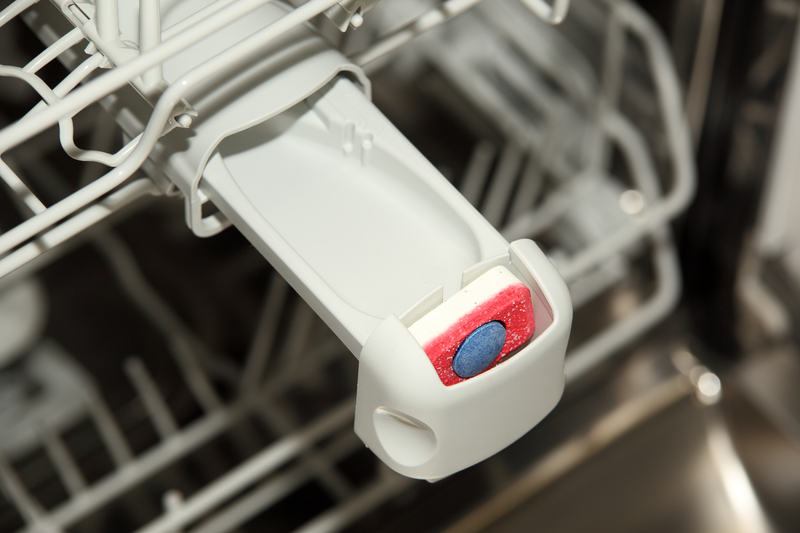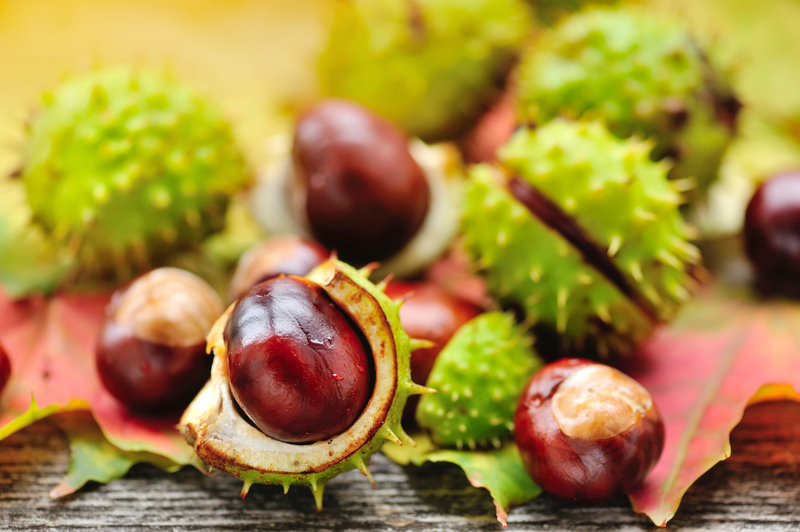Professional-Level Curtain Cleaning Made Easy
Posted on 26/08/2025
Professional-Level Curtain Cleaning Made Easy: Your Complete Guide
Keeping your curtains looking flawless and fresh is an essential part of maintaining a healthy, beautiful home. But professional-level curtain cleaning doesn't have to be complicated or expensive. Whether you want to freshen up your drapes between deep cleans or tackle tough stains, this comprehensive guide has everything you need to make your curtain cleaning process smooth, effective, and stress-free--all from the comfort of your home.

Why Curtain Cleaning Matters For Your Home
Curtains and drapes act as decorative anchors, providing privacy and enhancing your home's style. However, they're also magnets for dust, allergens, pet hair, and even mold. Neglecting regular upkeep can result in:
- Unpleasant odors
- Allergy flare-ups
- Fabric deterioration
- Dull, faded appearance
If you're aiming for professional-quality curtain cleanliness and durability, you need a reliable routine that works.
Understanding Your Curtains: Fabric Types and Care Instructions
Before starting any curtain cleaning routine, check the fabric type and manufacturer's care label. Here's why:
- Cotton and linen curtains: Usually machine washable but prone to shrinking; gentle cycles and mild detergents are best.
- Silk or velvet drapes: Require delicate hand washing or professional cleaning to avoid watermarks and fabric damage.
- Polyester and blends: Stain-resistant, usually safe for machine wash, but high heat can cause warping.
- Blackout curtains: Often sensitive to detergents and machine agitation; spot clean or steam clean is recommended.
Pro tip: Always test a small, hidden area first when using new cleaning methods or products.
Top Benefits of Regular Professional-Style Curtain Cleaning
- Healthier indoor air: Clean curtains trap fewer allergens, dust mites, and pet dander.
- Enhanced appearance: Removes grime, so your drapes stay vibrant and inviting.
- Increased curtain lifespan: Reduces fabric degradation caused by dirt, oils, and pollutants.
- Prevents mold, stains, and unpleasant smells.
- Saves money: Extends time between expensive curtain replacements or professional cleaning services.
How to Clean Curtains Like a Pro: Step-by-Step Methods
Let's break down the best professional-level curtain cleaning techniques--no industrial equipment necessary!
1. Pre-Cleaning: Dust and Vacuum
- Remove curtains from their rods.
- Take outside and shake vigorously to dislodge surface dust.
- Use a handheld vacuum with a soft brush attachment to gently vacuum both sides of each panel.
This basic step alone can dramatically reduce indoor allergens and keep fabrics fresh.
2. Spot Cleaning for Stains
- Blot stains promptly with a clean, damp cloth--never rub, as this can spread the stain or damage fibers.
- For grease or food: Mix a solution of mild dish soap and water, dab the area gently.
- For mildew or lingering odors: A mixture of white vinegar and water (equal parts) works wonders.
- Always dry the cleaned area quickly with a hair dryer (on cool) to prevent watermarks.
Tip: Never use bleach on colored or delicate fabrics--it can ruin your curtains instantly!
3. Machine Washing (When Fabric Allows)
- Read care labels to ensure machine washing is safe.
- Remove all hooks, weights, or rings.
- Use a gentle cycle with cold water and mild detergent.
- Wash curtains separately to prevent tangling and tearing.
- For added softness, include 1/2 cup of baking soda with the detergent.
Dry promptly on a line or low-heat dryer setting to prevent shrinkage or wrinkling.
4. Hand Washing Delicate Fabrics
- Fill your bathtub or a large basin with lukewarm water and a teaspoon of gentle detergent.
- Submerge panels, gently agitating them by hand to loosen dirt.
- Soak for 5-10 minutes, then rinse thoroughly until water runs clear.
- Squeeze gently to remove excess water--never wring or twist delicate drapes.
- Hang dry, smoothing out wrinkles while damp for a crisp finish.
Note: Silk, velvet, and lined curtains should only be spot cleaned or entrusted to professional curtain cleaning services if you are unsure.
5. Steam Cleaning for On-the-Rod Freshness
- Invest in a home fabric steamer for quick, chemical-free curtain cleaning.
- Hang curtains as normal and run the steamer up and down the fabric, keeping a safe distance to avoid soaking.
- This method is excellent for deodorizing, sanitizing, and smoothing wrinkles without removal.
- Works wonders on heavy drapes, blackout panels, and lined curtains.
Steam cleaning is the "secret weapon" of professional curtain cleaners for maintaining drapes between deeper cleans.
DIY vs. Professional Curtain Cleaning Services: Which Is Best?
Depending on your curtains' fabric, age, and condition (and your available time!), you may wonder if hiring a curtain cleaning specialist is worth it. Compare your options:
DIY Professional-Level Curtain Cleaning
- Cost-effective: Only basic supplies needed--detergent, vinegar, and a steamer.
- Convenient: No appointments required; fits any schedule.
- Control: You handle delicate items with extra care.
Hiring a Curtain Cleaning Professional
- Best for vintage, lined, or oversized drapes that are difficult to handle or require restoration.
- Typically uses specialized equipment and eco-friendly solvents.
- Results in ultra-deep cleaning with next-level stain removal and color revival.
Most homeowners get stellar results with DIY professional-style curtain cleaning for standard fabrics and regular maintenance, reserving the pros for special cases or annual deep-cleans.
Tips For Quick, Easy Curtain Maintenance
Curtains don't need to be deep-cleaned every week. For continued freshness between washes:
- Vacuum every 2-3 weeks.
- Steam clean monthly or as needed.
- Treat stains immediately before they set.
- Wash or dry clean every 6-12 months, depending on household factors (pets, smokers, allergies).
Rotate curtains with the seasons or switch out panels for easy style updates and to give fabrics a break.
Common Curtain Cleaning Mistakes To Avoid
- Skipping the care label: Always verify fabric requirements first!
- Using harsh chemicals or too much heat on synthetic or delicate fabrics.
- Washing with hardware still attached--this can cause tears and snags.
- Overloading the washing machine--curtains need space to swirl freely.
- Letting stains set--quick action is key.
Advanced Curtain Care: Stain Removal and Fabric Protection
Stubborn stains and long-lasting protection set true professional curtain cleaning apart. Try these strategies:
Deep Stain Removal
- Protein stains (blood, milk): Blot with cold water, then apply an enzyme-based cleaner.
- Grease or oil: Sprinkle baking soda on the spot; let sit for 15 minutes before brushing away and treating with dish soap.
- Mold or mildew: Dab with vinegar or a diluted hydrogen peroxide solution--wear gloves and ensure good ventilation.
Fabric Protection for Longer Cleanliness
- Consider a fabric protector spray (like Scotchgard) after cleaning to repel stains and dust.
- Opt for blackout or stain-resistant curtains in high-traffic rooms for easier long-term care.
- Close windows on stormy or humid days to prevent dampness and mildew buildup.
Eco-Friendly Curtain Cleaning Made Simple
If you value sustainability as well as spotless drapes, you'll love these green cleaning solutions:
- Steam cleaning: Naturally sanitizes with just water--no harsh chemicals needed.
- White vinegar: Safely deodorizes and tackles mold or mildew.
- Baking soda: Eliminates tough odors and enhances detergent effectiveness in the wash.
Eco-friendly curtain cleaning keeps your family safer and honors the environment--plus, it's usually gentler on your fabrics, too!

FAQs: Professional Curtain Cleaning at Home
- How often should I clean my curtains?
Deep clean every 6-12 months or more frequently in homes with allergies, smokers, or pets. - Can I clean blackout curtains without damaging them?
Spot-clean or use a handheld steamer, as machine washing may ruin the coating. - Is it safe to use a washing machine for all curtains?
No, check your labels! Only wash if approved; delicate, lined, or interlined drapes may require hand washing or professional care. - What is the best product for stain removal?
Mild dish soap for greasy stains, vinegar for odors or mildew, and enzyme treatments for protein spills are all highly effective.
Conclusion: Curtain Cleaning Does Not Have To Be Hard!
Elevating your home's atmosphere with clean, well-cared-for drapes is easier than ever. Armed with these expert tips on professional-level curtain cleaning, you can tackle every stain and safeguard your investment for years to come. Whether you're washing simple sheers, steaming heavy velvets, or spot cleaning in a hurry, a consistent routine ensures a fresh, inviting look--and healthier air for your whole family.
Ready to enjoy spotless curtains without the stress? Let "Professional-Level Curtain Cleaning Made Easy" be your go-to resource whenever your drapes need a refresh!



